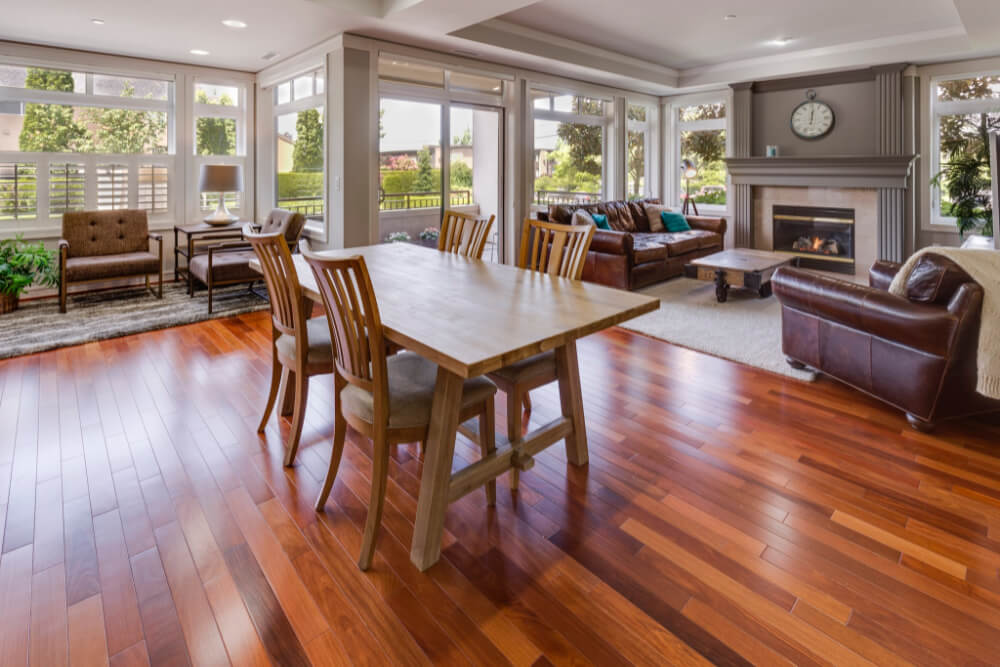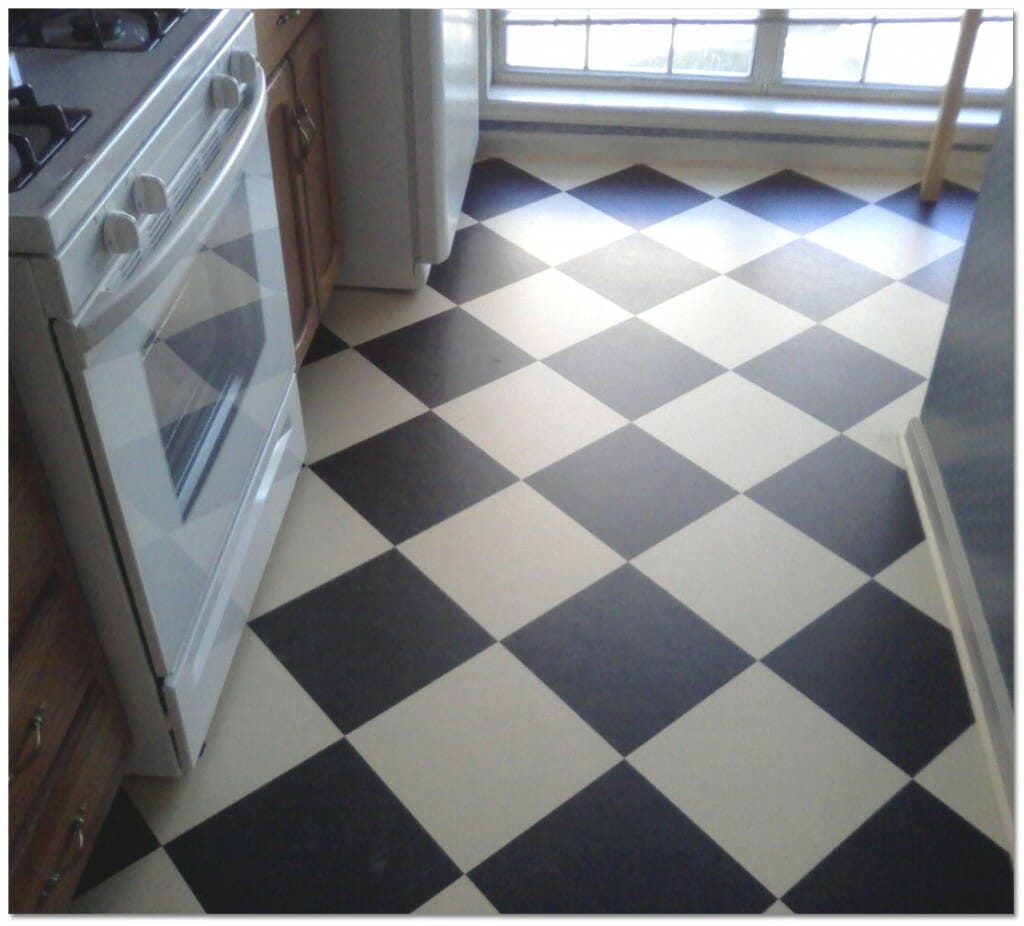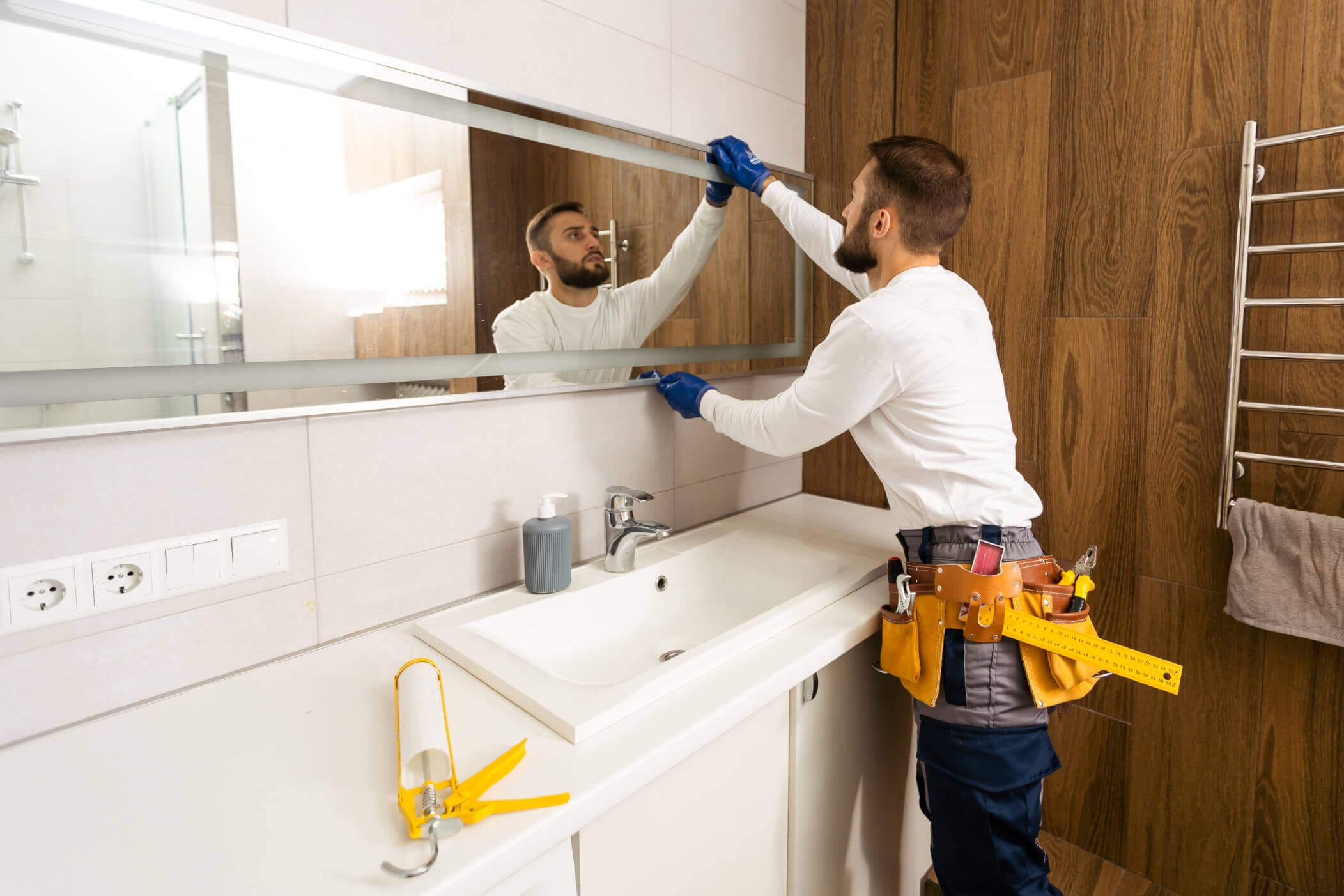Installing New Flooring in Your Home
Flooring is a foundational element of any home, combining functionality, durability, and aesthetics. There are several reasons to embark on a new flooring installation project, including:
- Update your floor’s appearance. Perhaps your tile flooring is outdated and you are looking to modernize a space in your home with a fresh new look.
- Repair damaged flooring. Your older floorboards may be damaged, cracked, loose, or even molding underneath. These emergencies require a quick flooring replacement.
- Increase home value. Aesthetics aside, new flooring can increase the value of your home, the National Association of Realtors reports.
- Add comfort. Whether you want to install carpet or unique bamboo wood flooring, flooring replacements are one of the preferred renovation projects for bringing homeowners additional comfort and enjoyment in their residences.
Whatever the reason, if you have decided it is time for a flooring upgrade, you have a wide range of options when it comes to a flooring installation. This guide explores types of flooring, installation processes, costs, and maintenance tips to help you make an informed decision.

What are the Different Types of Flooring?
There are several types of flooring available, each suited to different rooms and lifestyles. The eight most popular flooring options are:
- Hardwood: Known for its classic and elegant appeal, hardwood floors are durable and can last decades with proper care.
- Laminate: A budget-friendly alternative to hardwood, offering a similar appearance with added scratch resistance.
- Vinyl: Water-resistant and durable, vinyl flooring is perfect for high-traffic or moisture-prone areas.
- Tile: Versatile and durable, tiles come in materials like ceramic, porcelain, and natural stone.
- Carpet: Soft and warm underfoot, carpet is ideal for bedrooms and living rooms.
- Linoleum: Eco-friendly and made from natural materials, linoleum is a durable and sustainable option for various spaces, known for its retro appeal and resilience.
- Bamboo: A sustainable and stylish alternative to hardwood, bamboo is both durable and eco-friendly, making it a great choice for green homes.
- Cork: Naturally soft and warm, cork flooring provides comfort underfoot and is ideal for areas where noise reduction is desired, such as bedrooms or offices.
The best floors for your own home will depend on who lives in the house, which room or rooms the floors will be installed in, and your budget. You can read more about types of flooring as well as the advantages and disadvantages of each type.
Frequently Asked Questions
What Is The Cost of Flooring Installation?
The cost of new flooring depends on the type of flooring installed, the room size, the flooring brand you choose, and local contractor prices in your area. Below you will find an overview of flooring prices, from lowest to highest, based on the type of flooring and cost per square foot.
Type of flooring Cost per square foot
Carpet $1 to $6
Sheet vinyl and vinyl plank $2 to $3
Linoleum $2 to $4.80
Engineered wood $2.40 to $6.40
Laminate $4 to $8
Hardwood $6 to $12
Porcelain and ceramic tile $3 to $10
Natural stone $7 to $20
Additional Costs To Consider:
- Installation and labor costs can range between $1 and $2 per square foot, in addition to the cost for materials.
- Carpet padding is highly recommended to install underneath carpet flooring and starts at $0.61 per square foot. Thick, high-grade carpet padding is worth every penny, especially if it’s covering a concrete slab foundation.
- Underlayment for laminate floors averages $1.80 per square foot.
- Demolition or tear-out and disposal of your existing flooring. This averages $50 to $475 total to remove and dispose of your old flooring.
It’s worth noting that national home improvement retailer centers typically offer many cost-conscious options.
Frequently Asked Questions
Topics to Explore
How To Choose the Right Flooring for Homes?
Selecting the right flooring depends on your budget, room type, lifestyle, and aesthetic preferences. Here’s how you can choose effectively:
- For moisture-prone areas like kitchens and bathrooms: Vinyl or tile is recommended.
- For cozy spaces like bedrooms: Carpet or hardwood provides warmth and comfort.
- For high-traffic areas like hallways: Laminate or engineered wood is durable and stylish.

If you are unsure, it always good to ask your flooring installer to inspect and suggest based on your home size, room, climate, maintenance requirements, and the overall style of your home. Use our guide to flooring types with pros and cons to make the right choice.
Frequently Asked Questions
What Does Flooring Installation Process Involve?
Here is a step by step guide on how new flooring installation is done:
Step 1: Preparation
Start by removing the old flooring—this could involve pulling up carpet and padding or detaching tiles or planks. Once the existing floor is cleared, inspect the subfloor for damage like cracks, uneven surfaces, or rot. Fixing these issues ensures a stable base for your new flooring and prevents problems down the line, such as squeaking or premature wear.
Step 2: Measurements
Take precise measurements of the room’s length and width, accounting for nooks, closets, or other irregular spaces. Accurate measurements help you order the right amount of material, reducing waste and saving money. It’s wise to purchase a bit extra—about 5–10% more than the exact measurement—so you have room to handle mistakes and any unexpected odd cuts.
Step 3: Installation
Always follow the manufacturer’s instructions, whether you’re using glue, nails, or a click-together system. Ensure the subfloor is clean, level, and free of debris before starting. If you’re using nails or staples, confirm they are the correct size and type. For floating floors, leave expansion gaps around the perimeter to accommodate natural movement and avoid buckling.
Step 4: Finishing Touches
Once the main flooring is installed, add trims, baseboards, or quarter rounds to conceal the expansion gaps and give the room a polished look. Finally, clean the newly laid floor with an appropriate product or method recommended by the manufacturer. This step not only makes your floor look its best but also helps maintain its durability over time.
Frequently Asked Questions
Topics to Explore
How Can I Maintain And Care for Home Flooring?
Proper maintenance keeps floors looking great for years. Each material needs a specific cleaning approach to stay in top shape.
Hardwood
Regular sweeping or vacuuming removes debris to prevent scratches. Use a slightly damp mop with a wood-safe cleaner and avoid excessive moisture.
Tile
Focus on cleaning and sealing grout lines to prevent discoloration. Dry floors quickly after mopping to discourage mold or mildew.
Vinyl
Regularly mop with a mild cleaning solution and clean spills promptly. Protect against scuffs by lifting heavy furniture and avoiding harsh chemicals.
Carpet
Vacuum frequently to lift dirt and maintain fiber integrity. Schedule annual professional cleaning and spot-treat stains immediately.
Frequently Asked Questions
Topics to Explore
Should I Repair Or Replace Home Flooring?
When to Repair Flooring
Minor issues like small scratches on hardwood, a few loose tiles, or a damaged plank in an otherwise solid floor often only need simple fixes. In these cases, repairing can be more cost-effective and quicker than a full replacement. By addressing these issues early, you’ll preserve the longevity and appearance of your floors without a significant investment.
When to Replace Flooring
If the damage is widespread—such as extensive warping, large-scale water damage, or severe wear—and your floors no longer look or function properly, replacement is usually the better option. Additionally, if the flooring material is outdated (both aesthetically and structurally), installing new flooring can refresh the space, increase overall durability, and boost your home’s value.
Frequently Asked Questions
How Can I Choose the Right Flooring Contractor?
When hiring or choosing a flooring contractor, it is important that you ask the right questions and check their experience and credibility. We recommend considering the following:
- Ask how long they’ve been in business and what projects they specialize in.
- Less experience can still be fine—just confirm pricing and warranties are appropriate.
- Check if they know about local, regional, or federal rebates to cut costs.
- Get a clear breakdown of costs and timeline.
- Confirm what happens if anything changes—preferably in writing.
- Request testimonials or contact info of previous clients to gauge satisfaction.
- Make sure they have liability, worker’s comp, and property damage coverage.
- Verify manufacturer and installation warranties for clarity on what’s covered.
Frequently Asked Questions
Topics to Explore
Ready to get your project started?
Let us find the best Flooring pros in your area, then easily request quotes, book a contractor, and get the job done. It's that easy.

Homeowner Resources
Here are the top articles that homeowners found useful when planning their flooring project and navigating the contractor hiring process.

Real Stories, Real Success
See how our solutions empower homeowner projects and experiences.
